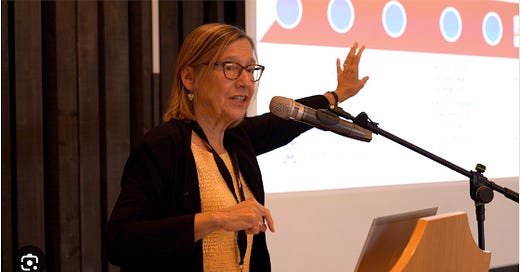Teacher education as preparation for what is or what could be?
Professor Pam Grossman … learning about a method or learning to justify a method is not the same thing as learning to do the method with a class of students, just as learning about piano playing and musical theory is not learning to play the piano. (Lampert, 2005, p. 36, quoted Grossman et al p 275))
This distinction between ‘learning about’ and ‘learning to’ is at the centre of this article by Grossman et al.
In an attempt to tackle the tendency in preservice teachers to see theory as one thing and practice as another, they suggest a refocusing of teacher education onto what they call ‘pedagogies of enactment’, and more ‘practice-centred curriculum’. They write:
This vision has a different emphasis from programs such as a realistic approach, in which teachers’ concerns and needs are at the center. In this formulation, a set of practices are at the core. (277)
The authors list, amongst possible core practices, such related things as developing a classroom culture, routines for collaborative learning, helping students to give constructive feedback to each other, eliciting student thinking during interactive teaching, leading classroom discussions.
The authors paint a picture of a teacher education course organised around such core practices, where preservice teachers are introduced to the skills, given opportunities to practise them with peers and teacher educators, are then scaffolded into reading the literature around the practices, and finally given time in schools to further refine their practice.
It sounds logical and sensible.
Much of our current Literacy Across Disciplines unit might be viewed as an example of such a course organised around pedagogies of enactment, using (as it does) Cris Tovani’s various strategies and approaches and giving our students opportunities to work on the nested literacy practices of making texts accessible, modelling successful strategies, holding one’s thinking, using questions to guide reading, finding authentic purpose, and so on.
But there’s something about the ‘pedagogies of enactment’ approach that is unsettling me.
This ‘parsing teaching’ (278) seems a step backwards from the more adventurous ‘case study’ approach of Hammerness and her co-authors (2002), an approach in which teachers’ concerns and needs are at the center’ (277).
Our course in Canberra puts our preservice teachers’ concerns at the centre and is structured around the case study approach.
Our students take observed and experienced school-based events as the place where theory is used to help settle doubts and anxieties.
Why did this go wrong?
What might I have done to rescue this situation?
Or even, if an event was unexpectedly successful, how can I understand better what has just happened so that the chances are I’ll be able to do it again?
The Grossman article seems to be pointing towards a less-rich, less-situated, less-personal approach.
Our approach in Canberra (and that of Hammerness et al in 2002) allows students to reflect on their values, on why they want to teach, and opens up the territory of how they might work towards important ideals, how they might set off along the road less travelled. The Grossman et al approach seems more a preparation for the familiar path.
Am I making a false dichotomy, I wonder?
********
Hammerness, K., L. Darling-Hammond, et al. (2002). "Toward Expert Thinking: How curriculum case writing prompts the development of theory-based professional knowledge in student teachers, ." Teaching Education 13(2): 219-243. Pam Grossman, Karen Hammerness and Morva McDonald. ( 2009). "Redefining teaching, re‐imagining teacher education,." Teachers and Teaching: Theory and Practice 15(2): 273-289.





